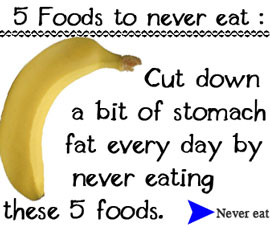Losing weight shouldn’t take the joy out of life. Celebrations and spending time with good friends is a part of being happy. Those types of gatherings or occasions are usually coupled with a bottle of wine or some other spirits. When someone hands you a glass you don’t want to be mentally calculating the calories in white wine.
[A bottle a day...wait that's an apple. The key to white wine is moderation.]
Read more about the calories in white wine…
You’ve probably heard over and over again how alcohol is bad for losing weight. Just 4 oz of white wine can have over 100 calories!
Red wine is recommended as the best choice of wine for its antioxidants, but when it comes to calories, white wine has just a few more than red wine per glass.
Of course, depending on your taste, there are many different types of white wine and each has a slightly different calorie content. For the most part, the calories in white wine come from the alcohol. The lower the alcohol content, the less calories it would contain. Let’s take a look at what you need to know.
Major Nutrients Found In White Wine
Apart from the alcohol found in white wine, the only other macronutrient you’re going to get is carbohydrates. Even though the average glass only contains just over 5 grams total, this will still contribute to your daily calorie intake. For those who are low carb diets, this may be too much to spend on a beverage when it could go towards your food instead.
If you opt for one of the sweeter dessert wines out there, this calorie count will be even higher yet, so that’s something that you definitely need to be aware of.
Here are the problems associated with drinking white wine.
Bad Calories in White Wine
Too much white wine can lead to regrets. Poor Stewie
There are two downfalls to the calories consumed from alcohol.
The first is way the body uses alcohol. When the body detects alcohol acetate in your body, it directs all its attention to it, leaving fat on the back burner. So long as you supply the body with alcohol for energy, you will burn no fat.
The second is the not-so-pretty effect that alcohol has on people. Inhibitions are left behind. The more you drink, the farther behind they fall.
Completely sober, you might be able to stay on track. After a few too many glasses of white wine, you easily start to justify why you need to eat that rack of ribs or double meat nachos.
So, those slightly innocent calories from white wine can lead to many more calories than you planned for. Believe me, you’ll feel guilty in the morning, among other things.
Burn Off A Glass Of White Wine
In order to burn off a glass of white wine you would have to do:
- 12 minutes of moderate paced jogging
- 25 minutes of light circuit training
- 36 minutes of window shopping
Cooking For Low Calories in White Wine
Luckily, there is a way to use white wine in your favor for a weight loss programme.
White wine is a great addition to your recipes. Here is the best part about cooking with white wine:
The calories in white wine virtually vanish when you cook it.
Why?
The reduction process, as fancy chefs call it, evaporates all the alcohol in the wine, leaving nothing but the wonderful flavor behind to sweeten your food.
White wine can be used in marinades, soups, and sauces. Just make sure you use it in cooked recipes. White wine is great in salad dressings, too, but all the calories are still there in its full form.
Try this recipe for a low calorie white wine dish:
White Wine Steamed Seafood and Spring Vegetables
1/2 lb of each- mussels, prawns, and scallops
2 cups of mixed spring vegetables (red pepper, snow peas, carrots, broccolli, onions)
1 Tbsp crushed garlic
1/4 cup white wine
1 Tbsp soy sauce
1 Tbsp cajun seasoning
2 Tbsp olive oil
Marinade seafood and vegetables in remaining ingredients for 2 hours. Remove seafood and vegetables from marinade and steam in a steamer for 10-15 minutes occasionally drizzling with remaining marinade.
Serve with a lemon squeeze. Bon Appetit!
And if you’re looking for a new way to think about eating so that your diet doesn’t have to turn you into a total stress bag, check out our review of Brad Pilon’s Eat Stop Eat program.














